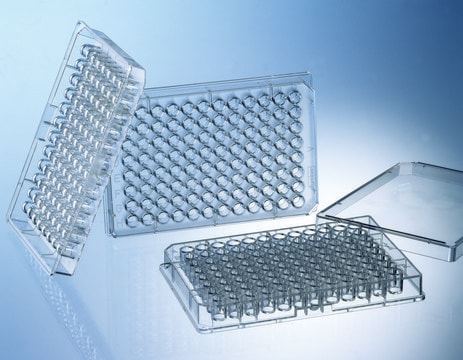MAK006
Urea Assay Kit
sufficient for 100 colorimetric tests
Sign Into View Organizational & Contract Pricing
All Photos(2)
About This Item
UNSPSC Code:
12161503
NACRES:
NA.84
Recommended Products
usage
sufficient for 100 colorimetric tests
detection method
colorimetric
storage temp.
−20°C
General description
The new Urea Assay Kit, MAK471, is now available! Urea is the major end product of nitrogen metabolism in most animals and is produced in a series of reactions in the liver called the urea cycle. In the urea cycle, ammonia is converted to urea, which is carried by blood to the kidneys for elimination from the body. High levels of urea in the blood may indicate renal failure. Urea levels may also be elevated in response to treatment with certain drugs such as corticosteroids or in response to decreased kidney filtration due to dehydration or congestive heart failure. Decreased blood urea levels can occur in response to liver disease or malnutrition.
Application
Urea assay kit has been used to measure the concentration of urea.
Features and Benefits
Compatible with high-throughput handling systems.
Suitability
Suitable for the measurement of urea concentration in a variety of samples such as serum, plasma, and urine, etc.
Principle
In this assay, Urea concentration is determined by a coupled enzyme reaction, which results in a colorimetric (570 nm) product, proportional to the Urea present.
replaced by
Product No.
Description
Pricing
Signal Word
Danger
Hazard Statements
Precautionary Statements
Hazard Classifications
Eye Irrit. 2 - Resp. Sens. 1 - Skin Irrit. 2 - Skin Sens. 1 - STOT SE 3
Target Organs
Respiratory system
Storage Class Code
10 - Combustible liquids
Flash Point(F)
188.6 °F - closed cup
Flash Point(C)
87 °C - closed cup
Certificates of Analysis (COA)
Search for Certificates of Analysis (COA) by entering the products Lot/Batch Number. Lot and Batch Numbers can be found on a product’s label following the words ‘Lot’ or ‘Batch’.
Already Own This Product?
Find documentation for the products that you have recently purchased in the Document Library.
Customers Also Viewed
Inhibition of the RhoGTPase Cdc42 by ML141 enhances hepatocyte differentiation from human adipose-derived mesenchymal stem cells via the Wnt5a/PI3K/miR-122 pathway: impact of the age of the donor.
Chaker D, et al.
Stem Cell Research & Therapy, 9(1), 167-167 (2018)
Protein tyrosine phosphatase 1B deficiency in podocytes mitigates hyperglycemia-induced renal injury.
Ito Y, et al.
Metabolism, Clinical and Experimental, 76, 56-69 (2017)
Urea and ammonia metabolism and the control of renal nitrogen excretion.
Weiner I D, et al.
Journal of the American Society of Nephrology, 10(8), 1444-1458 (2015)
Kate Smith-Jackson et al.
The Journal of clinical investigation, 129(3), 1061-1075 (2019-02-05)
Atypical hemolytic uremic syndrome (aHUS) is frequently associated in humans with loss-of-function mutations in complement-regulating proteins or gain-of-function mutations in complement-activating proteins. Thus, aHUS provides an archetypal complement-mediated disease with which to model new therapeutic strategies and treatments. Herein, we
Sriram Ravindran et al.
Cardiovascular drugs and therapy, 31(5-6), 511-524 (2017-10-02)
Sodium thiosulfate (STS) has of late been proven efficacious in models of urolithiasis and vascular calcification. However, its cardiovascular effects on ischemia reperfusion injury (IR) have not been revealed. Being an antioxidant and calcium chelator, it is assumed to play
Our team of scientists has experience in all areas of research including Life Science, Material Science, Chemical Synthesis, Chromatography, Analytical and many others.
Contact Technical Service




